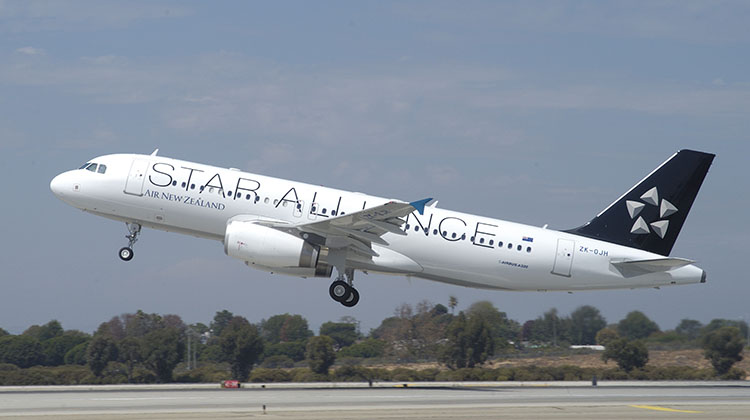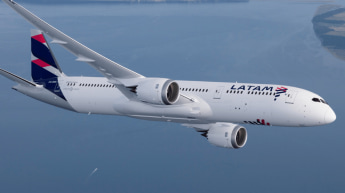Star Alliance chief executive Mark Schwab says Virgin Australia would very much fit in should it choose to be a part of the 28-airline alliance.
However, the boss of the Star Alliance believes Virgin’s partnership with Delta Air Lines, which Australia’s competition regulator recently reauthorised for a further five years, and the airline’s strategy of working with a number of carriers on a bilateral basis means it is unlikely to join any of the global alliances any time soon.
“They are a great airline, their business model fits very much what we do but they’ve made their commercial decision to partner with many, many different carriers,” Schwab told Australian Aviation in an interview at Auckland Airport on September 25.
“I’d say the fact they just renewed their joint venture to North America for several years probably makes it a little more complicated for Star membership in the near future.”
Schwab was visiting Auckland for meetings with airline representatives as well as for the unveiling of Star Alliance member Air New Zealand’s new international premium lounge at Auckland Airport.

The Frankfurt-based chief executive noted Virgin’s existing partnerships with Star Alliance members Air NZ and Singapore Airlines, with the two carriers owning almost half of Virgin shares.
“Virgin has an interesting network and we see more and more involvement by selected Star carriers in Virgin, but at the end of the day they are making their own independent commercial decisions,” Schwab said.
Virgin chief executive John Borghetti has preferred to forge a series of bilateral deals with other carriers to broaden his airline’s international network and provide members of its Velocity frequent flyer program more redemption opportunities and premium benefits such as lounge access and priority services.
To that end, Virgin has government-approved alliances with Delta Air Line for trans-Pacific routes and Etihad Airways for Europe, the Middle East and Africa. Australia’s second largest carrier also has partnerships with Star Alliance members Air NZ for the Tasman and Singapore Airlines for Asia and an alternative route to Europe.
Borghetti said the bilateral approach worked better for a relatively small airline such as Virgin.
“One of the things we deliberately decided set out to do four years ago is not join a global alliance,” Borghetti told CAPA – Centre for Aviation in an interview in December 2014.
“What you don’t want to do is enter a partnership where you have multiple relationships but frankly it is all weighted to one side.
“We are a very small carrier at the end of the world and you will never have your share of voice around those tables with very large airlines.
“I think that relationships in the future are not going to be about multilateral kind of arrangements, they are going to be more about bilateral arrangements.”
There are 10 Star Alliance airlines that fly to Australia – Air Canada, Air China, Air India, Air NZ, Asiana Airlines, EVA Air, Singapore Airlines, South African Airways, Thai and United. An 11th, Japan’s ANA, is due to launch services to Sydney in December.
That compares with seven for the oneworld alliance (British Airways, Cathay Pacific, Japan Airlines, LAN, Malaysia Airlines, Qantas and Qatar Airways). That number increass to eight from December when American starts services to Sydney from Los Angeles.
Meanwhile, Skyteam has eight airlines – China Airlines, China Eastern, China Southern, Delta, Garuda, Korean Air and Vietnam Airlines – serving Australia, with a ninth, XiamenAir, due to begin flights to Sydney in November.
While Star Alliance has not had a local carrier in Australia since the collapse of Ansett, Schwab noted the Australasian market was a very important one given the high levels of international travel.
“I personally go visit our carriers in Australia every couple of years to participate in events they hold with the travel trade there,” Schwab said.
“The travel trade will tell you the Star Alliance actually works quite well together in that marketplace, in part because we don’t have a home carrier so they coordinate and join their sales and marketing forces there to put on a very strong international presence.”
Schwab said Air NZ was a “very active member” of the Star Alliance that offered good access to the region.
Moreover, he was excited about Air NZ’s upcoming international expansion with new flights to Houston, the largest hub of Star Alliance member United, as well as the recently approved joint-venture with Air China that will facilitate the Chinese flag carrier operating flights between Beijing and Auckland from December.
“More Star Alliance around-the-world fares are sold in this part of the world than anywhere else in the world,” Schwab said.
“For us it is a big source of revenue. We don’t have that much Star Alliance service directly into New Zealand but it is Air New Zealand that reaches out and connects into the rest of the Star Alliance network.
“Air New Zealand is very much our anchor in this part of the world.”
Established in 1997, the Star Alliance has grown from five foundation carriers – Air Canada, Lufthansa, Scandinavian Airlines, Thai Airways and United – to 28 member airlines today that have a combined 18,500 flights a day with about 4,650 aircraft and operate more than 1,000 premium lounges for the enjoyment of its premium frequent flyers.
Schwab said the focus on the period ahead would be on investing in technology to make cooperation between carriers easier and improving the customer experience, rather than adding new members.
“It is about creating technology at the centre to solve for the complexity of interconnecting 28 airlines,” Schwab said.
“The sweet spot of these technology is that it enhances the customer experience, it makes the processes between our carriers less complex and it saves on operating costs for our carriers.”
The newest member of the Star Alliance, Avianca Brazil, was formally admitted in July.

















Ethical Nightmare
says:Bilateral agreements are better in many ways, however, would be nice for Virgin to start competing with carbon frames soon for the benefit of the Australian pax.
Ben
says:I can’t see it happening any time soon. To join Star they’d likely be required to dump DL for UA, loose AB (Oneworld) and with the tie-up that EY and AB have it would put a strain on that one too. Can’t see them risking the EY relationship and DL connectivity state-side since they already have agreements with NZ, SQ and SA (The Star carriers Australian’s would be most likely to use).
I’d wonder what terms Star members would want on VA’s existing arrangements with their non-alliance competitors in EY, HA, VS and VX. As members of competing alliances you would surmise that arrangements with DL and AB would have to go.